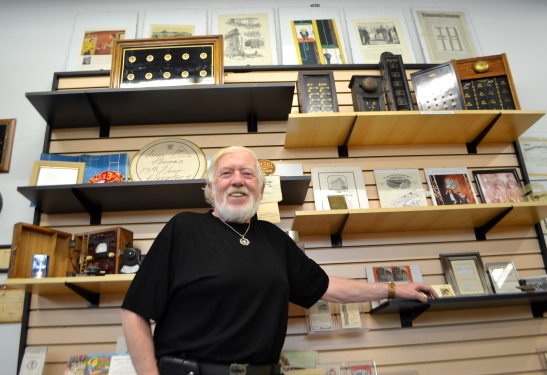Something is going down in Long Island City.
For the past three years the neighborhood has been home to The Elevator Historical Society, also known as the Elevator Museum, on the second floor of the bright yellow taxi building at 43-39 21st St.
The museum was started by Patrick Carrajat, 70, who has been active in the elevator business since he was 11 years old and went to work with his father every weekend.
“What 11-year-old boy doesn’t want to go to work with his father?” Carrajat said.
Since then Carrajat, who lives in Long Island City with his wife, has worked throughout the elevator business, owning his own company at one point, and is now an elevator consultant and expert witness.
After realizing that his own personal elevator collection was getting too large, he decided to find a place to begin the museum.
Among the items at the site are those he has collected for years, including what he calls his favorite piece – a cover of an interlock that he brought home the first day working with his father in 1955 – and items he buys on eBay as well as some donations.
“The museum came about because I had no place to put all of this stuff and I thought it would be a good idea to give stuff back to the industry,” he said. “I owe a lot to the industry. It’s a pay-it-forward type of situation.”
Before starting the museum, Carrajat also wrote a book called “History of the American Elevator,” which he says came out of a “near death experience” after he was scheduled to be on the 79th floor machine room of the North Tower on 9/11, but took the day off.
He said what intrigues him the most are the social and economic implications and importance of elevators to our everyday lives.
“If we didn’t have the elevator, New York City would stretch from north of Boston to south of Washington D.C. It would be five- or six-story buildings, that’s all it would be,” he said. “There is also so much interaction that can happen in an elevator. There’s a certain closeness in an elevator, you can’t avoid it. Our personal space gets invaded in elevators all the time.”
Carrajat says the museum welcomes, with no charge, about 500 visitors per year. He hopes the visitors, who to his surprise are mainly made up of “non-elevator people,” leave with a little better appreciation of the history and hopefully pass along to other people “that there are interesting small museums.”
In the end, Carrajat said the plan is for all the items in his collection to go to Elevator World, Inc., the publisher for the international building transportation industry, in Alabama.
“I fell in love with the business and wiser people have said, ‘If you love what you do, you don’t work a day in your life.’ I’m still waiting to go to work,” Carrajat said. “I think it’s a great thing to say at 70 that you love what you do and you keep doing it.”
Although people can stop by the museum, Carrajat recommends potential visitors call in advance just to make sure he is in. For more information visit www.elevatorhistory.org or call 917-748-2328.
RECOMMENDED STORIES
- College Point tattoo shop hopes to make an indelible mark in Bayside
- Ridgewood thrift shop shutting its doors
- Astoria friends raising money to get hot sauce in stores, restaurants






































